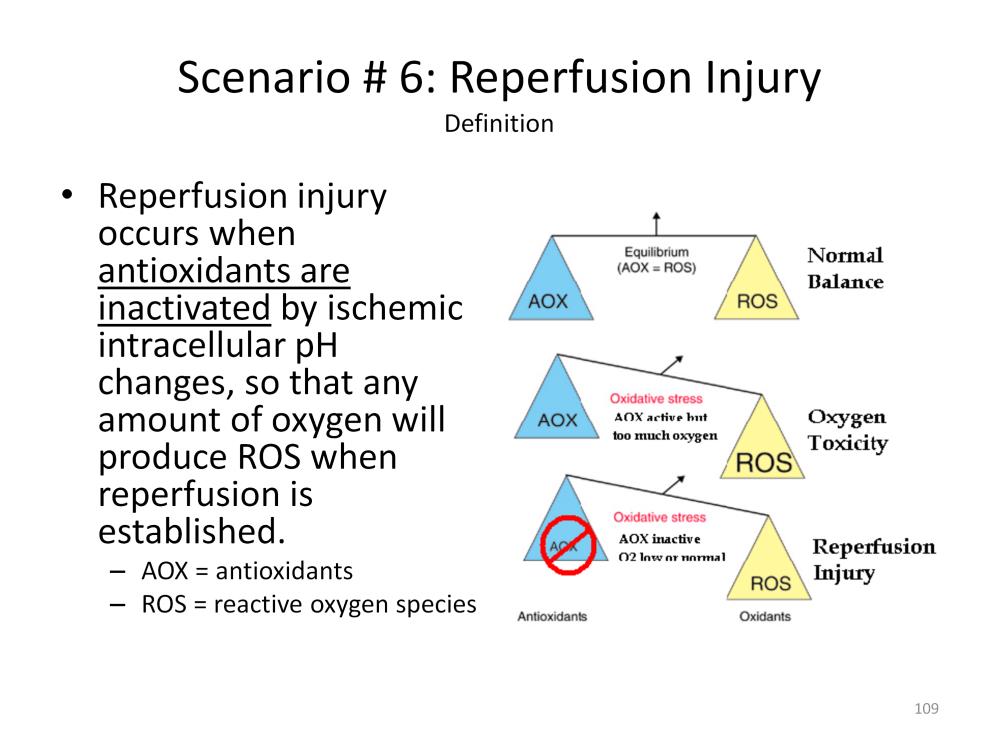
Reperfusion injury occurs after tissues undergo a period of reduced oxygenation caused by poor perfusion. During the ischemic period anaerobic metabolism causes metabolic acids to build up in tissue. Poor perfusion also inhibits the removal of carbon dioxide which builds up in the tissues. The resulting intracellular acidosis deactivates the antioxidants. When perfusion is restored, oxygen and calcium enter the weakened cells and cause reperfusion injury before the intracellular pH can be normalized and the antioxidants reactivated. The oxygen stress injury occurs even when the perfused oxygen levels are low. The use of elevated oxygen levels to reperfuse ischemic tissues can further magnify the damage.
The best way to avoid reperfusion injury is to avoid ischemia. However when this is not possible, such as when the heart is cross clamped or during deep hypothermic arrest, the perfusionist should employ a reperfusion strategy to minimize the damage.

Perfusion Theory is an educational platform for the Oxygen Pressure Field Theory (OPFT). August Krogh’s theoretical concept of the oxygen pressure field is explained and then applied to clinical applications in perfusion practice.